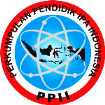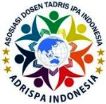Penerapan Model Pembelajaran LC 7E Dengan Pendekatan TBCT dan CT untuk Meningkatkan Kemampuan Memahami Siswa
Abstract
Penelitian ini bertujuan untuk melakukan kajian terkait peningkatan kemampuan memahami siswa pada konsep fluida statis setelah diberikan perlakuan dengan model pembelajaran learning cycle 7E dengan pendekatan Technology Based Constructivist Teaching dan Constructivist Teaching. Metode penelitian yang digunakan adalah Quasi Experiment dengan desain Pretest Posttest Two Equivalent Group Design. Subyek penelitian adalah 29 orang siswa kelas XI IPA 1 dan 27 orang siswa XI IPA 2 di salah satu SMA Negeri di Kab. Kuantan Singingi, Prov. Riau. Instrumen penelitian yang digunakan adalah tes kemampuan kognitif berbentuk tes tertulis jenis pilihan ganda terkait konsep fluida statis. Hasil penelitian menunjukkan bahwa setelah dilakukan penerapan model pembelajaran learning cycle 7E dengan pendekatan TBCT dan CT, hasil kemampuan memahami siswa secara umum meningkat pada kelas eksperimen sebesar 0,71 dengan kategori tinggi dan kelas kontrol sebesar 0,65 dengan kategori sedang.
Full Text:
PDFReferences
Abdulloh, S. & Shariff, A. (2008). The Effects of Inquiry-Based Computer Simulation with Cooperative Learning on Scientific Thinking and Conceptual Understanding of Gas Laws. Eurasia Journal of Mathematics, Science & Technology Education, 2008, 4(4), 387-398.
Anderson, L. W. & Karthwohl, D. R. (2001). A Taxonomy for Learning, Teaching, and Assesing (A Revision of Bloom’s Taxonomy of Educational Objectives) New York: Longman.
Arikunto, S. (2014). Dasar-dasar Evaluasi Pendidikan Edisi Revisi. Jakarta: Bumi Aksara.
Bybee, R. dkk. (2006). The BSCS 5E Instructional Model: Origins, Effectiveness and Applications. article (online) tersedia di http://www.bscs.org/pdf/bscs5eexecsummary.pdf.
Demirci, N. (2005). A Study About Student’ Misconceptions In Force And Motion Concept By Incorporating A Web-Assisted Physics Program. The Turkish Online Journal of Education Technology-TOJET, 4 (3).
Eisenkraft, A. (2003). A proposed 7E Model Emphasizes “Transfer of Learning” and the Importance of Eliciting Prior Understanding, Reprinted with Permission from “the Sciences Teacher”. Vol 70 No.6 Copyright © by the National Science Teacher Association (NSTA).
Ergin, I. (2012). Constructivist Approach Based 5E Model Usability Instructional Physics. Latin America Journal Physics Education. 6(1).
Fraengkel, J. R., Wallen, N. E., & Hyun. H. H. (2012). How To Design and Evaluate Research in Education. New York: McGraw-Hill Companies, Inc.
Hake, R. (1999). Analyzing Change / Gain Score. [Online]. Tersedia: http://lists.asu.edu/cgi-bin/wa?A2=ind9903&L=area-d&P=R6855.
Kanli, U & Yagbasan, R. (2007). The Effect Of Laboratory Based On The 7E Learning Cycle Model And Verification Laboratory Approach On The Development Of Students’ Science Process Skill And Conceptual Achievement. Essays in education, special edition, hal. 143-153.
Karplus, R. (1980). Teaching for Development of Reasoning. Science Education Information Report. The Ohio State University.
Kementerian Pendidikan dan Kebudayaan.(2013). Kerangka dasar dan struktur kurikulum sekolah menengah atas / madrasah aliyah. Jakarta: Depdikbud.
Kocokaya, S & Gonen. (2010). The Effect of Computer Assisted Instruction Designed According To 7E Model of Constructivist Learning On Physics Student Teachers Achievement, Concept Learning, Self Efficiency Perceptions And Attitudes. Turkish online journal of distance education-TOJDE, 11(3), hal.206-224.
Kurnaz, M.A. dan Calik, M. (2008). Using Different Conceptual Change Methods Embedded Within the 5E Model: A Sample Teaching for Heat and Temperature. Journal of Physics Teacher Education.5, (1), 1-25.
Marshall, Jeff C, dkk. (2009). 4E x 2 Instructional Model Uniting Three Learning Constructs to Improve Praxis in Sciences and Mathematics Classrooms. Journal Science Teacher Education. (20), 501-506. DOI 10.1007/s10972-008-9114-7.
McMillan, J, H. & Schumacher, S. (2006). Research in Education: Evidence-Based Inquiry (Boston: Pearson Education), p. 24.
Permana, N, D. (2018). Penerapan Model Pebelajaran Learning Cycle 7E Berbantuan Website Untuk Meningkatkan Keterampilan Berpikir Kritis Siswa Pada Materi Kinematika Gerak Lurus. Journal of Natural Science and Integration. 1 (1).11-41
Ruseffendi. (1998). Dasar-dasar Penelitian dalam Bidang No-Eksaktas. Bandung: Alfabeta.
Sugiyono. (2013). Metode Penelitian Kuantitatif Kualitatif dan R&D. Bandung: Alfabeta.
Suparna, I. (2016). Integrasi Strategi Peer Instruction Ke Dalam Model Pembelajaran Learning Cycle 7E Untuk Meningkatkan Pemahaman Materi Ajar Dan Penalaran Ilmiah Siswa SMA. Tesis Sekolah Pascasarjana UPI. Bandung.
Tuysuz, C. (2010). The Effect of the Virtual Laboratory on Students’ Achievement and Attitude in Chemistry. © 2010 International Online Journal of Educational Sciences ISSN: 1309-2707.
Warliani, R (2016). Implementation Of 7E Learning Cycle Model Using Technology Based Constructivist Teaching (TBCT) Approach To Improve Students’ Understanding Achievment In Mechanical Wave Material. Mathematics, Science, and Computer Science Education (MSCEIS 2016) AIP Conf. Proc. 1848, 050005-1–050005-5; doi: 10.1063/1.4983961. Published by AIP Publishing. 978-0-7354-1520-1/$30.00.
Wena, M.(2009) Strategi Pembelajaran Inovatif Kontemporer. Jakarta: Bumi Aksara.
Yilmaz, G. K., Ertem, E., & Cepni, S. (2010) The Effect of The Material Based On The 7E Model On The Fourth Grade Students Comprehension Skill About Fraction Concepts. Procedia social and behavioral sciences, 2 (2), hal. 1405-1409.
DOI: http://dx.doi.org/10.24014/jnsi.v2i1.7116
Refbacks
- There are currently no refbacks.

Journal of Natural Science and Integration
E-ISSN: 2620-5092 P-ISSN: 2620-4967
Published By:
Department of Science Education, Faculty of Education and Teacher Training,
State Islamic University of Sultan Syarif Kasim Riau, Indonesia
Mailing Address:
Jl. H.R Soebrantas Km. 15 No. 155
Kelurahan Simpang Baru
Kecamatan Tuah Madani, Pekanbaru, Riau, Indonesia
Email: jnsi.tadrisipa@uin-suska.ac.id
Indexed By:
Journal of Natural Science and Integration is licensed under a Creative Commons Attribution 4.0 International License.


_-_Copyy2.png)






.jpg)
.png)
.jpg)
.jpg)




